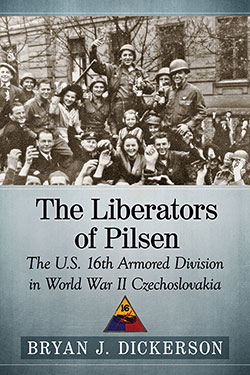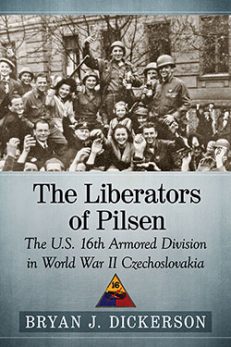The Liberators of Pilsen
The U.S. 16th Armored Division in World War II Czechoslovakia
$35.00
In stock
About the Book
Formed in July 1943 at Camp Chaffee, Arkansas, the 16th Armored Division was the last U.S. armored division to be activated in World War II, the last deployed to the European Theater and the last to see combat. As the war in Europe was coming to an end, General George S. Patton chose the division to spearhead a daring advance into Czechoslovakia. In its first and only combat operation, the 16th liberated the city of Pilsen, forever endearing itself to the Czech people. Poised to continue to the capital city of Prague, the division was halted not by German resistance but by political rivalries between the Western powers and the Soviet Union. Official U.S. Army records and veteran accounts tell the story of the unit’s brief two-year existence and its successful mission.
About the Author(s)
Bibliographic Details
Bryan J. Dickerson
Format: softcover (6 x 9)
Pages: 233
Bibliographic Info: 23 photos, 4 maps, notes, bibliography, index
Copyright Date: 2018
pISBN: 978-1-4766-7114-7
eISBN: 978-1-4766-2989-6
Imprint: McFarland
Table of Contents
Map Symbols vi
A Word About Names and Spelling vii
Prologue 1
Introduction 3
1. Forming the 16th Armored Division 7
2. Training for War 32
3. Czechoslovakia’s Long Years of Nazi Occupation 37
4. Summer and Fall of 1944 44
5. Deployed to Europe 53
6. First Battle for the 23rd Cavalry Squadron 64
7. The First Days of May 1945 79
8. Day of Decision 85
9. Pilsen and Prague on the Eve of Liberation 95
10. The Liberation of Pilsen 100
11. The Liberation of Pilsen Part 2 119
12. Ike Ordered Halt! 128
13. The End of the War in Europe 135
14. The Pratt Mission 139
15. V-E Day and Occupation Duties 147
16. The 16th Armored Division Shuffle 161
17. Returning Home and Deactivation 167
18. The Postwar Lives of the 16th Veterans 169
19. The Legacy of the 16th Armored Division 180
Epilogue 190
Chapter Notes 191
Works Cited 208
Index 217
Book Reviews & Awards
“Recommend[ed]…well researched and Dickerson’s endnotes will enable years of further research.”—Army History






